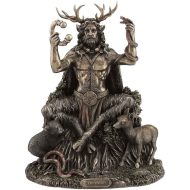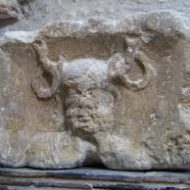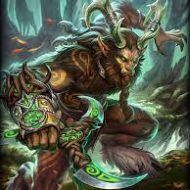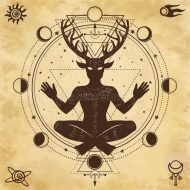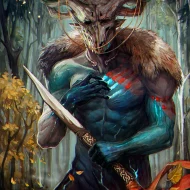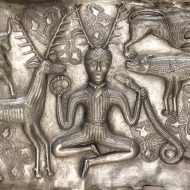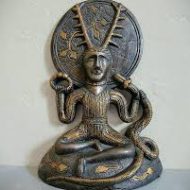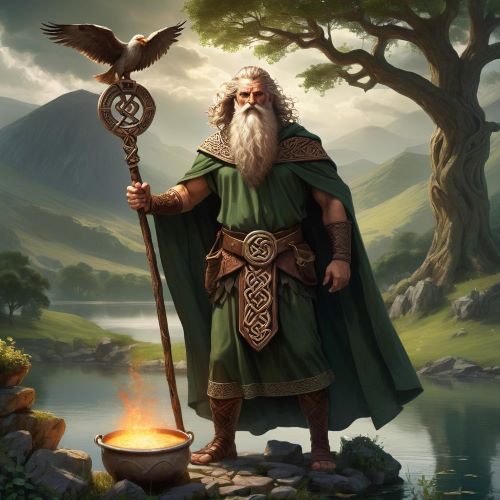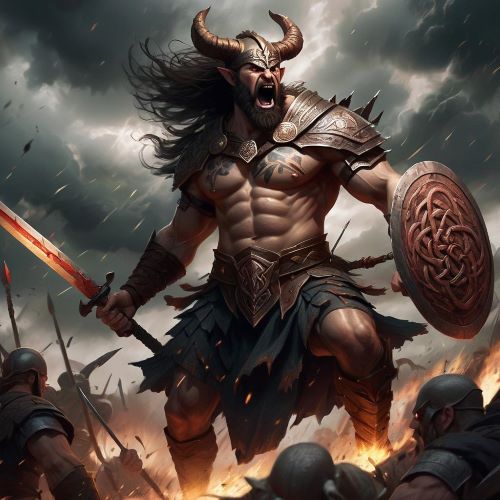Cernunnos : The Horned God
Listen
At a glance
| Description | |
|---|---|
| Origin | Celtic Mythology |
| Classification | Gods |
| Family Members | N/A |
| Region | Britain, Ireland, France, Belgium |
| Associated With | Wild Places, Forests |
Cernunnos
Introduction
The ancient Celtic god known as Cernunnos was a creature who represented fertility, nature, and fauna. He was often depicted in Celtic art, wearing horns or stag antlers. Although details about him are not known, some notable works of art include the Gundestrup Cauldron, the Nautae Parisisci monument, and the Val Camonica rock art painting.
The religious beliefs of the pagan leader known as Cernunnos inspired the depiction of Satan in various Christian works of art and heroes in Ireland and Wales during the medieval period. Although his supporters were mainly in Britain, there were traces of his cult elsewhere. The Christian church was also against him due to his influence. He was often depicted as an image of the Antichrist in medieval and Christian manuscripts.
Physical Traits
The image of the horned god known as Cernunnos is easily identified in Celtic art. He was often depicted wearing a pair of stag antlers, which represent regeneration. They were also carved into phallic amulets. Some believe that the posture of the statue of the god, which is usually depicted in a cross-legged stance, is related to the Buddha’s teachings. However, it might have been a reflection of the practice of sitting at meals in such a manner that did not involve using a chair or stools. In some Celtic art, the heads of figures are pierced with holes.
One of the earliest known depictions of a male figure wearing a horn is a rock painting made in Italy known as Val Camonica. It dates back to the 5th millennium BCE and shows a tall creature with torcs and stag antlers. Some believe that the figure was a sun deity, and the depiction of him in this painting is proof of this. Relief panels show a seated god with his legs crossed and wearing torcs around his neck. He also holds a long serpent with a ram’s head, which is likely related to abundance and strength.
The painting shows a large creature with torcs and a stag, surrounded by a deer, a small creature that appears to be a dolphin, and several other odd animals.
Other names
The word “cernnos” was an ancient Gaelic word that means “horned,” or “horned one.” It shares its origins with words found in the Celtic world, such as “horned,” “horse,” and “one-horned.” In Indo-European languages, the use of the word cern was common.
Contemporary scholars have used the name of the ancient Celtic god known as Cernunnos to refer to other Celtic deities whose names have been lost in history. There is not enough evidence to show that the name was used outside of Gaul. However, academic and religious experts have used it as a catch-all for other Celtic deities and horned gods.
Neopagans would often add other titles to the image of the god, such as “Lord of the Wild” or “God of Wild Places.” These terms have no historical basis and have gained popularity due to the emergence of neopagan beliefs.
Powers and Abilities
The god known as Cernunnos was a wild god who lived in an environment that was uncivilized. He was known for his ability to bring together various animals, such as wolves, elk, and snakes, for peaceful encounters. This ability could have led to him being a protector for rural communities.
It is believed that the god of the Wilds or Cernunnos was a fertility deity or god of life. During this time period, the natural world was regarded as the origin of all life, and it was believed that the god of the Wilds was a god of creation.
Modern Day Influence
Despite his mysterious nature, the god of the Wilds has made appearances in various forms of popular culture. One of these is in Marvel Comics. He was depicted as a man with both the face and the horns of a deer, instead of just the stag’s. In 2008, the band Faith and the Muse released a song about the god called “Cernunnos.”
Also, Monica Richards, the singer of the band Borean Dusk, used a drawing of the god on the cover of their album “The Antler King.” In addition, he has appeared in various video games, such as the role of a monster in Folklore and the demon in SMITE. Despite his appearances being associated with neopagan interpretations, the image of the god still remains popular.
Related Images
Frequently Asked Questions
What is lorem Ipsum?
I am text block. Click edit button to change this text. Lorem ipsum dolor sit amet, consectetur adipiscing elit. Ut elit tellus, luctus nec ullamcorper mattis, pulvinar dapibus leo.
What is lorem Ipsum?
I am text block. Click edit button to change this text. Lorem ipsum dolor sit amet, consectetur adipiscing elit. Ut elit tellus, luctus nec ullamcorper mattis, pulvinar dapibus leo.
What is lorem Ipsum?
I am text block. Click edit button to change this text. Lorem ipsum dolor sit amet, consectetur adipiscing elit. Ut elit tellus, luctus nec ullamcorper mattis, pulvinar dapibus leo.
What is lorem Ipsum?
I am text block. Click edit button to change this text. Lorem ipsum dolor sit amet, consectetur adipiscing elit. Ut elit tellus, luctus nec ullamcorper mattis, pulvinar dapibus leo.
What is lorem Ipsum?
I am text block. Click edit button to change this text. Lorem ipsum dolor sit amet, consectetur adipiscing elit. Ut elit tellus, luctus nec ullamcorper mattis, pulvinar dapibus leo.

